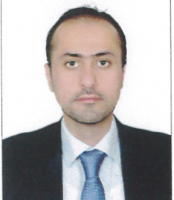
Hesham brings two decades of experience in Addiction treatment, prevention, research, policy development and training. He holds PhD in Addictions from Institute of Psychology, Psychiatry & Neuroscience-King’s College London & a professional doctorate from Purdue University-Indiana University and has 15 publications in different areas of addictions with focus on Psychopharmacology.
Abstract
An Exploratory Study on Individual stigma to Substance Use in a Clinical Population
Objectives
- To measure individual stigma levels at for patients seeking treatment from Substance Use Disorders.
- To examine the association between individual stigma levels and treatment outcomes measure by positive toxicology screens, retention in treatment and change in Work and Social Adjustability.
Rationale
Stigma is acknowledged as a complex negative attitudes and behaviors towards an attribute (Goffman, 1963). Stigma has been associated with mental health illness including substance use disorder (SUD) (Corrigan et al., 2004). In the United Arab Emirates, Stigma is reported as a barrier to treatment seeking and recovery (Elarabi et al., 2012; Al Suwaidi et al., 2018). Despite that stigma associated with SUD being a global challenge, little effort has been made to study self-stigma (Corrigan et al, 2003; Rusch et al., 2005).
Methodology
After consenting, patients seeking treatment at the National Rehabilitation Center – the National Substance Use Response Center- in the UAE, the intake procedures include administering self-stigma scale (King et al., 2007), Work and Social Adjustment Scale (WSAS- Mundt, Marks, Shear, & Greist, 2002); Rosenberg self-esteem scale (Rosenberg, 1965).
Urine Drug Screens collected under-supervision at admission and for 16-weeks at the outpatient care. Participants are offered follow up to 52-weeks.
Statistically Analysis- Bivariate analyses are conducted to between the self-stigma scores, self-esteem and patient characteristics, and treatment outcomes. Participant characteristics showing significant associations are included in a linear regression model to examine independent predictors of treatment outcomes.
Substance Use and the Role of Families
Objectives:
- To identify the involvement of families in the treatment/recovery process of NRC patients using substances
- To measure the family’s perception of stigma using a standard instrument
- To contribute data for a multicentre study involving other countries
- To identify examples of good practice and disseminate this information
Rationale
Cappello and Orford (2002) argue that the literature strongly suggest that family members are important stakeholders in the process of change. They make the case for capitalizing on family members to get substance abusers into treatment, maintaining their participation, improving outcomes and reducing negative impact on the family itself. However, in many countries those members are not involved in addressing ways they could support or impact the treatment/recovery process. Stigma may be a key mediator in this and has not been extensively studied in relation to addictions (Wanigaratne et al 2022).
Method
Two surveys, one direct and one online. Using a mixed methods study design where one survey would be filled out by subject who use psychoactive substances or diagnosed substance use disorder. The second survey to be completed by those identifying as family members of substance users.
Results
The findings from the study will be presented. Comparison of the findings with studies conducted in other countries by ISSUP International will be made. Implications of the findings will be discussed.
